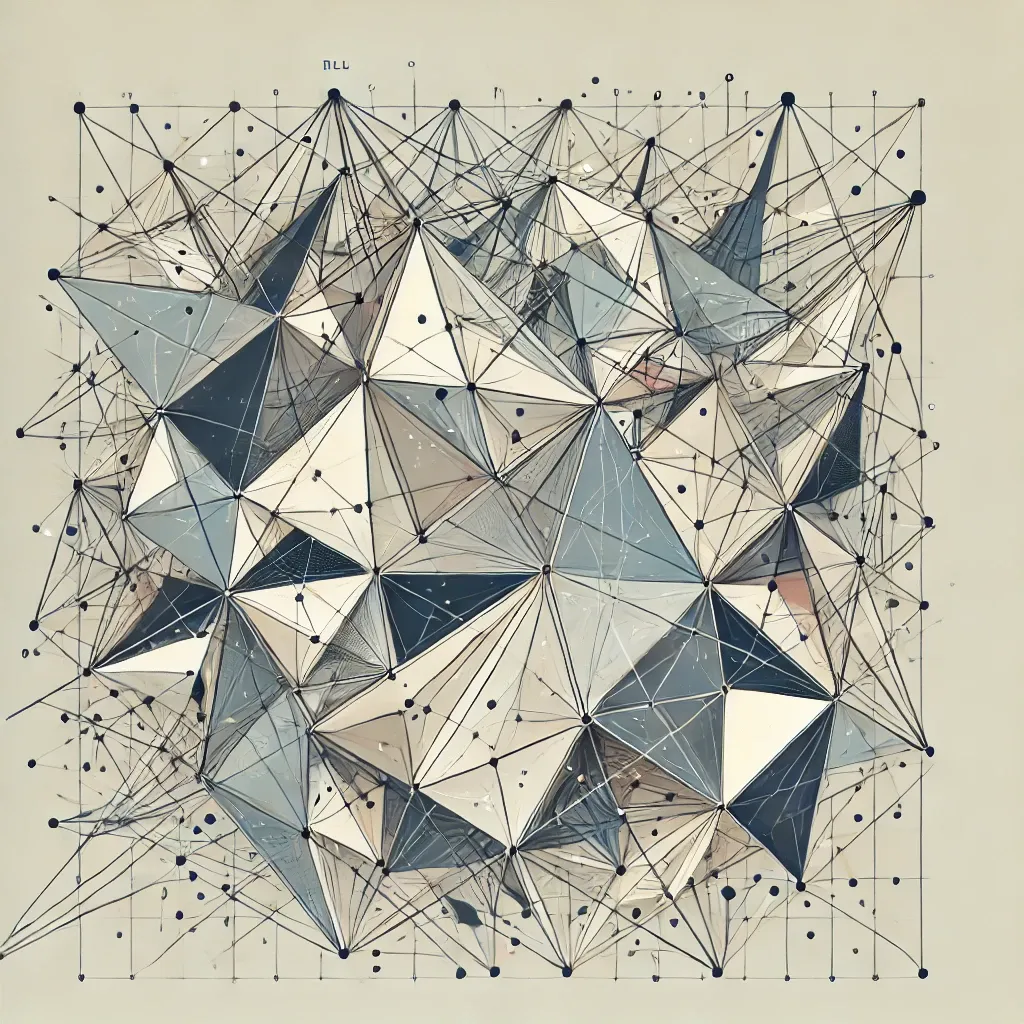Neural algorithmic reasoning: learning to execute classical algorithms with GNNs
Sources: https://thegradient.pub/neural-algorithmic-reasoning, https://thegradient.pub/neural-algorithmic-reasoning/, The Gradient
Overview
This resource profile summarizes the ideas in Neural algorithmic reasoning, which connects classical computation—think shortest paths, sorting, and dynamic programming—to modern neural models. The Gradient article argues that classical algorithms exhibit properties (reliable accuracy, modularity, and clear data-flow structure) that modern deep neural networks often struggle with, especially under distribution shift or when interpreted as black boxes. The piece uses competitive programming as a motivation for why we care about classical computation: it trained many practitioners to think in terms of efficient procedures, decomposition into subproblems, and structured data manipulation. The central motif is whether neural networks, particularly graph neural networks (GNNs), can learn to execute classical algorithms by aligning their inductive biases with the data-flow structure of those algorithms. A key focal point is the Bellman–Ford algorithm for shortest paths, which maintains a per-node distance estimate and updates it by considering neighbors and edge weights. The article argues that when a neural model’s architecture mirrors an algorithm’s structure, sample efficiency improves, and the model is more amenable to generalization and interpretability. The discussion situates this idea within a broader history of neural algorithmic reasoning, including findings from the MIT group and subsequent work around learning to execute. A central claim is that algorithmic alignment—building models whose computation follows a target algorithm’s logic—can guide architecture choice and training to achieve better generalization, especially on tasks that mirror classic DP and graph-based procedures. The piece also notes practical limitations: even with alignment, not all expressive GNNs will generalize well out-of-distribution, and naive application can lead to overfitting or “clever hacks” that don’t reflect the target algorithm. The narrative closes with reflections on the ongoing evolution of this area, including how more granular building blocks, linear-algorithmic alignment, and notions from causal reasoning, category theory, and asynchronous computation are shaping new directions. In sum, neural algorithmic reasoning asks how we can borrow tools and intuition from classical computation to improve the reliability, interpretability, and generalization of neural models, particularly when the goal is to teach machines to execute algorithms rather than merely approximate results.
Key features
- Relates classical DP and graph algorithms (e.g., Bellman–Ford) to neural architectures like GNNs.
- Emphasizes algorithmic alignment: matching a model’s computation to an algorithm’s data flow improves sample efficiency and learning effectiveness.
- Presents Bellman–Ford as a concrete example where per-node distance estimates and neighbor-based proposals naturally map to a neural update scheme.
- Highlights empirical findings that GNNs can outperform architectures lacking strong inductive biases on DP-style execution benchmarks.
- Acknowledges limitations: powerful models can still overfit to training distributions and fail on out-of-distribution inputs without careful inductive biases.
- Traces lineage from neural Turing machines (NTMs) and differentiable computers (DNCs) to modern, more modular memory- and alignment-based approaches.
- Introduces concepts like linear algorithmic alignment and the role of memory and attention in executing algorithms.
- Connects to larger themes: causal reasoning, category theory, and asynchronous computation as components of a rigorous theory for algorithmic reasoning in networks.
Common use cases
- Evaluating whether neural models can learn to execute classical algorithms as a benchmark for algorithmic reasoning.
- Exploring cases where inductive biases aligned with DP/algorithm structure yield better generalization to larger inputs or different graph topologies.
- Investigating the role of memory, attention, and data-flow decomposition as building blocks for learnable algorithm execution.
- Serving as a testbed to compare GNN-based approaches with more traditional or less structured neural architectures on dynamic programming-like tasks.
- Using these insights to inform design choices for AI systems that must reason about structured data and provide interpretable, robust outputs.
Setup & installation
Setup and installation details are not provided in the source material.
# No setup commands are available in the source. If you want to explore the ideas,
# you would typically prepare a Python environment and implement DP-like updates
# or a simple GNN-based execution model following the Bellman-Ford data-flow pattern.Quick start
# Minimal Bellman–Ford style DP on a small graph
# Graph represented as an adjacency list with weights
graph = {
'A': {'B': 5, 'C': 2},
'B': {'D': 4},
'C': {'B': 1, 'D': 7},
'D': {}
}
source = 'A'
# Initialize distances
dist = {node: float('inf') for node in graph}
dist[source] = 0
for _ in range(len(graph) - 1):
updated = False
for u, nbrs in graph.items():
for v, w in nbrs.items():
if dist[u] + w < dist[v]:
dist[v] = dist[u] + w
updated = True
if not updated:
break
print(dist)This runnable example mirrors the Bellman–Ford computation described in the article: maintain a distance estimate per node and iteratively refine it via neighbor proposals and edge weights.
Pros and cons
- Pros:
- Provides a principled bridge between classical algorithmic reasoning and neural architectures, enabling more reliable generalization when model design mirrors algorithm structure.
- Empirically, algorithmically aligned GNNs can outperform less structured models on DP-style execution benchmarks.
- Frames a path toward more interpretable and robust AI systems by enforcing decomposition and data-flow akin to classical procedures.
- Cons:
- Alignment alone does not guarantee robust generalization; models can overfit to training distributions and fail on out-of-distribution inputs.
- Early neural memory architectures (NTMs, DNCs) inspired powerful ideas but proved brittle in practice, illustrating the need for careful modular design.
- Practical success depends on identifying the right inductive biases and building blocks for specific algorithms, not on a single universal architecture.
Alternatives (brief comparisons)
- Algorithmic-aligned GNNs vs differentiable memory machines (NTM/DNC): NTMs/DNCs aimed to provide random-access memory with differentiable operations, but were often brittle when scaled or debugged; more recent work emphasizes modular, algorithm-guided design.
- Pure transformers or generic neural networks: may lack the structured inductive bias that mirrors DP/data-flow, potentially reducing sample efficiency and generalization on algorithmic tasks.
- Classical DP approaches without neural components: provide exact, reliable baselines but lack the learning capability to adapt to distribution shifts or to generalize learned strategies to new problem instances. | Approach | Strengths | Trade-offs |---|---|---| | GNNs with algorithmic alignment | Strong inductive bias for DP-style tasks; good potential generalization | Requires careful architectural design; may still overfit without proper biases |NTMs/DNCs (differentiable memory) | Memory-augmented reasoning; early path to learnable computation | Historically brittle; difficult to deploy in practice |Transformers / general neural nets | Flexible, scalable; broad applicability | Less naturally aligned to data-flow of algorithms; may need more data |
Pricing or License
Pricing or licensing information is not provided in the source material.
References
More resources
AGI Is Not Multimodal: Embodiment-First Intelligence
A concise resource outlining why multimodal, scale-driven approaches are unlikely to yield human-level AGI and why embodied world models are essential.
Shape, Symmetries, and Structure: The Changing Role of Mathematics in ML Research
Explores how mathematics remains central to ML, but its role is evolving from theory-first guarantees to geometry, symmetries, and post-hoc explanations in scale-driven AI.
What's Missing From LLM Chatbots: A Sense of Purpose
Explores purposeful dialogue in LLM chatbots, arguing multi-turn interactions better align AI with user goals and enable collaboration, especially in coding and personal assistant use cases.
Positive Visions for AI Grounded in Wellbeing
A wellbeing-centered framework for beneficial AI that blends psychology, economics, and governance to outline plausible, actionable deployment visions that support individual and societal flourishing.
Financial Market Applications of LLMs — Overview, features and use cases
Overview of how LLMs can be applied to financial markets, including autoregressive modeling of price data, multi-modal inputs, residualization, synthetic data, and multi-horizon predictions, with caveats about market efficiency.
A Resource Overview: Measuring and Mitigating Gender Bias in AI
Survey of key work measuring gender bias in AI, across word embeddings, coreference, facial recognition, QA benchmarks, and image generation; discusses mitigation, gaps, and the need for robust auditing.





